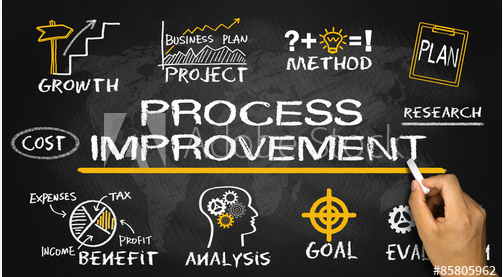WHAT IS ISO 9001 CERTIFICATION ?

ISO 9001 is a quality administration framework that can be incorporated into any business. The focus is to ensure that the business delivers a reliable degree of value to its clients by having well defined and consistently assessed procedures and processes. The framework completely coordinates with the current business methodology and becomes a part of routine within the organisation. In the long run a business won't perform a task to comply with the ISO 9001, it will perform the task for the benefit of the business. The framework covers seven primary business standards which help clients align their organization to the majority of their partners, clients, suppliers and staff.
The 7 principles are as follows:-
1. Customer Focus

Success of any organisation depends on customer satisfaction. Hence, it’s very important for any organisation to understand the present as well as future customer needs, and requirements and work on fulfilling them.
2. Leadership

The organisation’s head are responsible to create an environment where people engage themselves in accomplishing organisation’s goal. In order to achieve this one must trust, appreciate employee achievements and loyalty and set challenging objectives for extrinsic employee motivation.
3. Engagement of people

Employees are the driving force behind any successful organisation and their 100% involvement and abilities benefit the organisation’s. ISO 9001 expects preparing employees to have appropriate qualities in order to accomplish their task and thus contributing in the success of organization.
4. Process approach

When task and related resources are run as a process, they help in getting more efficient results. A process can be defined as a set of tasks or activities that use resources such as machines, people etc to convert inputs into outputs. Any organisation is comprised of multiple interacting processes.
5. Improvement

For any organisation excellent performance should be the primary objective. In order to achieve it, top management officials must encourage employees as well as monitor their improvements consistently. According to ISO 9001 Auditing QMS and improving processes is a necessity.
6. Robust Decision Making

Data analysis is the major pillar in the process of effective decision making. In case it appears that a particular zone fails to meet expectations, it is critical to take remedial activities to improve execution. To understand the problem and to know what preventive measures to take Root cause Analysis is one of the good methods.
7. Nurturing Relationship

Identification and selection of suppliers is important for any organisation, which helps them in maintain cost optimum use of resources and deliver value. The main reason for building good relationship with supplier is to ensure continuous improvement.
HOW DO I GET ISO 9001 CERTIFICATION?
1. Preparation

The first step to get ISO certified is to prepare your small or midsize company for ISO implementation and make decision on which certification approach to choose. This is by far the most important step as it sets a foundation to get certified and affects the success of your company to a great extent. It is also equally important to set objectives that will benefit your business including its efficiency, profitability and internal operations.
2. Documentation

Writing ISO 9001 documents such as procedure, quality policy and so on, is considered tobe one of the most difficult steps as various technical requirements need to be met. Also,it’simportant to see that all these documents meet the needs and specifications of the companywhich is an often-overlooked factor in many of the cases. Some of the documents required by ISO 9001 are
quality policy, Quality objectives, Forms, Process map(flowchart), Work instructions, Procedures but are not limited to only these.
It is important to understand that the documents should be specific and suitable for your company. A good documentation consists of clarity, layout, efficient processes and customization instructions
3. Implementation

At this stage organisations have to prepare their employees that will help them adjust their way of working in accordance to the requirements included in ISO 9001 documentation. To implement this step successfully it is important to see that the employees understand and adapt to the new processes and requirements that shall benefit the organisation in future.
4. Internal Audit

To see if all the requirements specified by company in ISO 9001 are being followed an inspection is done known as Internal audit. These audits are not necessarily conducted whenimplementing but also after completion of ISO 9001 processes. One or more employee of the company who is been trained in ISO 9001 auditing, performs all the internal audits, alternatively subcontractor can also be assigned. The primary task of every internal auditor is to check if the company fulfils all the specifiedrequirements.
5. Certification

It is necessary to have a third-party, independent auditor visit the company and do a site audit. To achieve successful ISO certification. Soon after you have gained a two months experience or have completed the internal audit. This certification audit can be done. Some of the things to consider to prepare for certification audit is to make staff relaxed, have appropriate documents, have proper answers for auditors and be tidy.
WHY YOU NEED ISO 9001 CERTIFICATION ??
ISO certification helps to understand and fulfil customer Requirements.
It helps to generate better revenue and business opportunities from new Customer.
ISO certification enhances company and product quality.
It helps to increase customer satisfaction with products.
Helps to better understand, describe and understand company processes.
Enhances company culture and motivates employees.
ISO certification helps to significantly reduce waste, improve efficiency and save money.
One of the major reasons is it helps in achieving International Quality Recognition.
WHY IS ISO 9001 CERTIFICATION IMPORTANT ?
Getting ISO certified is a proof that you keep promises with your employees, partners as well as customers. The major advantages of ISO certification are as follows:
1. Personal Benefits

1. High market share and profit potential
2. Appropriate time management through improved resource management.
3. Saves you investing efforts and money on repeated issues, with numerous issues being settled forever first-time round.
2. Customer Benefits

1. Showcases organisations consistency and reliability and ability to deliver customized solutions.
2. Helps to improve customer/supplier relationship with continuous response to customer feedback.
3. Helps to rectify and solve customer problems in much less time.
3. Employee Benefits

1. Better company performance ensures job security.
2. Employees are satisfied with the way of working and the tasks they perform.
3. Improved training facilities boosts employee morale and provides motivation.